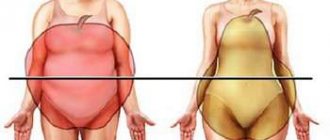Cardio training is a set of exercises that increase your heart rate and increase blood circulation throughout the body (from the English cardiovascular - cardiovascular).
You can do cardio training both in the gym on exercise machines (treadmill, bicycle, elliptical) and at home without additional equipment. We offer you a unique selection of cardio exercises and a ready-made plan for cardio workouts at home for losing weight and burning calories.
General information about cardio training at home
For some trainees, cardio is an unloved activity, for others, on the contrary, it is a real passion and pleasure. But no matter how you feel about cardio training, it is one of the key components of fitness. Be sure to include cardio exercise in your workout plan, even if you have low endurance or are a beginner. If you choose an adequate, feasible load, then cardio training will be accessible to everyone.
7 main myths about cardio training
Why do you need cardio training?
Before moving on to cardio exercises at home, let's remember once again why aerobic exercise is needed:
- Improving the functioning of the cardiovascular system by training the heart muscle
- Burn calories and improve muscle tone
- Endurance development
- Release of negative emotions, reduced risk of depression
- Acceleration of metabolic processes
- Reducing the risk of diabetes by reducing sensitivity to changes in blood sugar
- Improving the functioning of the respiratory system
- Increased bone density
In addition, a moderate cardio workout will give you energy throughout the day, leaving you feeling alert and energized. Of course, unless it is an ultra-intense activity that is performed to the limit of your capabilities. In this case, on the contrary, loss of strength and fatigue are possible.
Rules and features of home cardio training:
- Always do cardio exercises at home while wearing running shoes. Not barefoot, not in socks, not in sneakers, but in sneakers. Training without sneakers is dangerous for joint problems and injuries.
- To accurately measure calorie consumption during cardio training, it is better to use a heart rate monitor or fitness bracelet. On average, a 30-minute high-intensity cardio workout burns 300-400 kcal. Medium intensity: 250-350 kcal. Low intensity: 200-250 kcal.
- During cardio workouts, try to keep your heart rate between 130-150 beats per minute. These are the optimal boundaries for high-quality and safe heart training and effective calorie burning. If you don't have a heart rate monitor, you can pause for 15 seconds and take your heart rate (or between sets).
- If you have a problem with varicose veins, then you can use compression stockings or knee socks, which protect the veins from overload and injury. But impact jumps are best avoided.
- It is much more effective to do cardio training in interval mode. For example, 30 seconds of intense work - 15 seconds of rest (or the popular version of Tabata training: 20 sec/10 sec - more on this below). This will help you burn more calories, reduce muscle loss, speed up the fat burning process, and allow you to get the most out of your workout in less time.
- Cardio exercises are the same for women and men, and the approach to aerobic training is not fundamentally different. Except that men usually have higher endurance.
- Always start your cardio workout at home with a warm-up and end with a cool-down. Check out our pre-workout warm-ups and post-workout stretches.
- If you want to lose weight, don't forget about nutrition, which is the most important factor in burning fat. Even with regular workouts without dietary restrictions, it is impossible to lose weight.
Proper nutrition for weight loss: where to start step by step
Well, now let's move on to the main part of our article: cardio exercises for different levels of training. Read more about how many times a week to do cardio training below.
Cardio exercises are presented in GIF animation, which will help you visually understand how the movements are performed. After the pictures there is a version of the lesson plan for 25-30 minutes. You can independently change the duration and intensity of your cardio workout at home by reducing or increasing the number of laps.
How many calories does cardio training burn?
Several factors influence calorie expenditure:
- degree of load;
- heart rate;
- physical training;
- age.
It follows that the number of calories burned will be different for everyone. You can monitor the individual value of energy spent using the pulse sensors of all modern cardio equipment. With their help, you can see calorie consumption depending on your heart rate, age, and duration of exercise.
If you keep your heart rate in the fat burning zone, calculated individually, on average you can lose from 500-800 Kcal in 1 hour.
Running, walking on an elliptical, stepper, or riding an exercise bike will equally effectively promote fat burning, the main thing is not to exceed your heart rate . Accordingly, the higher the heart rate and the more difficult the load, the greater the calorie consumption. But this indicator will not be so important if you exceed the permissible maximum heart rate, at which the endurance of the heart muscle is trained. Therefore, you should pay attention not to calorie consumption, but to heart rate.
Cardio training at home using the Tabata method
Tabata training is a variation of cardio training that alternates bursts of intense intervals with short rest intervals. Cardio training using the Tabata method involves the following scheme: we train for 20 seconds, rest for 10 seconds, perform 8 sets of each exercise, 1 minute of rest between exercises, one Tabata round lasts 4 minutes.
Read more about Tabata training
We offer you 2 options for Tabata training at home: for intermediate and for advanced levels of training. Typically, one Tabata workout includes 8 exercises, in this case the lesson lasts ~40 minutes, but there may be other options at your discretion. For beginners, it is better not to practice Tabata training, but to choose a training plan from those proposed above.
Scheme for performing cardio training at home using the Tabata protocol:
- Tabata training includes 8 exercises
- Each exercise is performed 8 approaches
- Each approach involves 20 seconds of work and 10 seconds of rest.
- One exercise is performed for 4 minutes
- Rest 1-1.5 minutes between exercises
- The total duration of a cardio workout using the Tabata protocol for 8 rounds is 40-45 minutes.
Ready-made timers for Tabata can be downloaded for mobile absolutely free of charge, look in the application market of your device (Tabata Timer). Or turn on a ready-made video with a timer and music, for example:
Tabata training for intermediate level at home
Exercises included in cardio training:
- Running with shin splints
- Jump Squats
- Knee pull-up
- Jumping in plank with legs raised
- Plyometric Side Lunge
- Jumping with arms and legs raised
- Reverse plank foot touch
- Jumping to the side
We perform 4 sets of exercises “Tightening the knees” and “Plyometric lateral lunge”, first on one side, then on the other.
Execution scheme:
- We perform each exercise according to the following scheme: 20 seconds work and 10 seconds rest (this is one approach)
- We perform each exercise in 8 approaches, then move on to the next exercise.
- Between exercises rest 1-1.5 minutes
- Total workout duration: 40-45 minutes
For example, first we perform “Running with shin overlapping” in 8 approaches according to the 20/10 sec scheme, rest for a minute and move on to “Jumping squats”, which we also repeat in 8 approaches, etc.
Tabata training for advanced people at home
Exercises included in cardio training:
- Jumping lunges
- Running with high knees
- Burpee
- Jump into a wide squat
- Horizontal running
- Sumo squat with jumping
- Scissors
- Jumping 180 degrees
Execution scheme:
- We perform each exercise according to the following scheme: 20 seconds work and 10 seconds rest (this is one approach)
- We perform each exercise in 8 approaches, then move on to the next exercise.
- Between exercises rest 1-1.5 minutes
- Total workout duration: 40-45 minutes
For example, first we perform “Jumping Lunges” in 8 approaches according to the 20/10 sec scheme, rest for a minute and move on to “Running with high knees,” which we also repeat in 8 approaches, etc.
What heart rate should you keep during cardio to burn fat?
Perhaps the most important condition for losing weight during cardio is determining your heart rate zone. As mentioned above: exceeding the heart rate zone stops burning fat, and goes into mode to increase heart endurance and speed.
In the mode from 50 to 70% of the maximum heart rate - the best zone for burning fat, at this moment the heart does not experience enormous stress, and the muscles are not destroyed.
How to calculate your heart rate zone:
- 220 – age = maximum heart rate (bpm).
- Then multiply the maximum by 0.5 and 0.7 - these will be the limits (beats per minute) beyond which it is better not to go.
To find the right load, start your workout on any machine at a slow pace .
- Firstly, it will warm up the muscles and prevent injury;
- and secondly, it will help to gradually increase your heart rate, tracking it as the pace gradually increases.
You can read your pulse using heart rate sensors or manually.
When performing exercise, make sure that your heart rate does not exceed the upper limit. Over time, the heart adapts, and the heart rate at a certain pace will be lower compared to the first workouts. Next, you need to increase the pace, change programs, change exercise equipment, but still not go beyond the limits of your heart rate.
Common mistakes when doing fat-burning cardio
- Performing too short cardio sessions does not allow you to burn fat at all , unless we are talking about training on an empty stomach. During this time, the body does not have time to waste carbohydrates, and accordingly, the process of burning fat does not even have time to begin.
- Excessive exercise , more than an hour, leads to overwork and further storage of fat for normal functioning. Long-term stress is not just stress for the body, it is the enemy of the cardiovascular system and muscles.
- A low heart rate does not put the body in a state where it needs to use fat reserves as fuel. This means that if the body is easy, it will not burn calories and fat in the required quantities. Thus, nothing will happen other than an improvement in overall well-being.
- An elevated heart rate , above your own maximum, also does not contribute to fat burning. Otherwise, such loads contribute to wear and tear of the heart, improve speed, train the heart muscle, but do not promote lipolysis.
Who needs cardio training?
Strengthening the cardiovascular system is beneficial for everyone, regardless of age and level of physical fitness. Even just a long walk is good cardio activity, and cycling is even more so. But cardio training in the gym under the supervision of an instructor will be much more useful and effective.
Ivan Moiseenkov, trainer of the MyFitness Club:
“Outside, the weather is often the first obstacle: wind, rain, snow, slush, but in the hall an ideal microclimate has been created using an air conditioning system. A regular bicycle is an excellent means of transportation, but training on an exercise bike will be much more beneficial. It’s easier to control the load - it’s very easy to set it up on an exercise bike, plus you need to monitor your condition using a heart rate monitor, and then the cardio training will be done correctly.”











